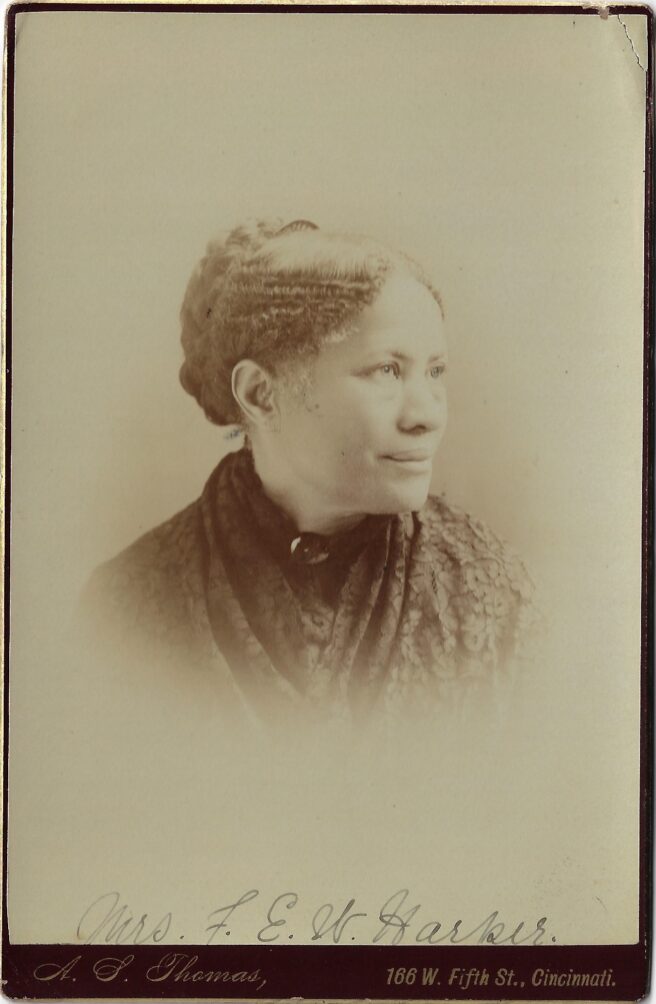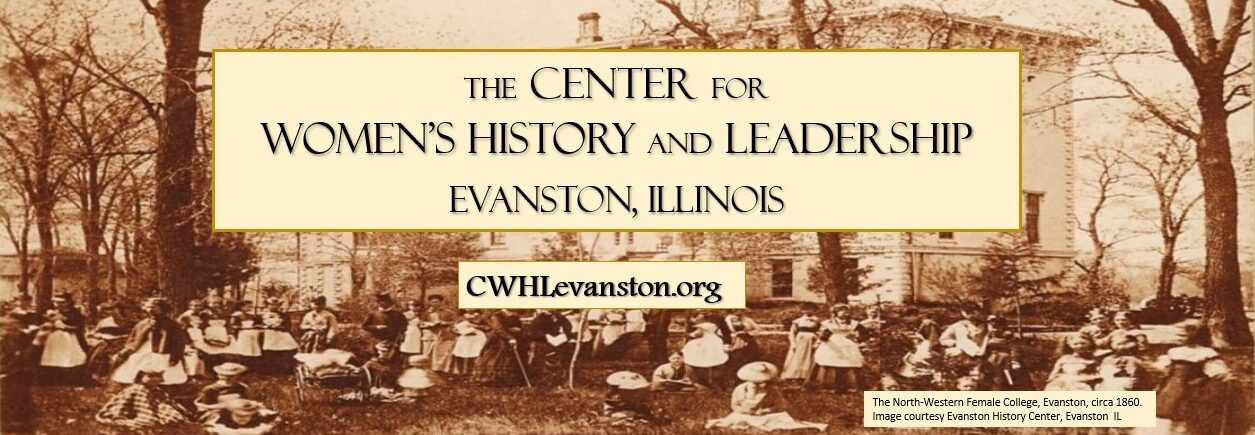By Fiona Maxwell, University of Chicago Graduate Global Impact Intern
Frances Willard’s prominence as an activist, orator, writer, and educator has tended to overshadow many of the other remarkable woman leaders active in the Woman’s Christian Temperance Union during the late nineteenth century–including Frances Ellen Watkins Harper, the National “superintendent for work among the colored people of the North” from 1883 to 1890. Over the course of her life, Harper embraced a wide range of reform efforts in order to bring about a more just and equal society. After decades of antislavery and women’s rights activism, Harper sought to use her leadership position in the WCTU to foster a strong interracial women’s movement.
Frances Watkins was born to free Black parents in Baltimore, Maryland in 1825. Orphaned by the age of three, she attended her uncle’s prestigious William Watkins Academy for Negro Youth, where she distinguished herself as a writer and scholar. The increasingly hostile climate of the Upper South led Watkins to move to Ohio, where she became the first female member of the faculty at the African Methodist Episcopal Union Seminary, a school in Columbus that later merged into Wilberforce University. During the mid-1850s, she moved to Pennsylvania and devoted herself to the abolitionist cause. She was hired by the American Anti-Slavery Society as a traveling lecturer, sharing the platform with Frederick Douglass, William Lloyd Garrison, Susan B. Anthony, and Sojourner Truth.
Watkins always combined activism with artistry. She was the most prolific nineteenth-century African American novelist and the most beloved African American poet of her time. Having studied elocution at her uncle’s academy, she became a renowned public speaker. One of the most “eloquent women lecturers in the country,” she was praised for her “clear, plaintive, melodious voice,” the “flow of her musical speech,” and “her logical presentation of truth.” She incorporated recitations of original poems into her programs of political speeches. The topics of her poetry, as well as her novel Iola Leroy (1892), mirrored the broad scope of her reform agenda–antislavery, racial equality, women’s rights, Christian service, and temperance.
In 1860, Frances Watkins married Fenton Harper. The couple settled on a farm in Ohio with their infant daughter. Sadly, four years later, Harper died. Court officers repossessed their farm and personal belongings to pay off his debts. Frances Harper returned to the reform world just as the Civil War was drawing to a close.

The postwar era witnessed a clash between reformers fighting for racial and gender equality. White suffragists Susan B. Anthony and Elizabeth Cady Stanton employed racist rhetoric to oppose the Fifteenth Amendment, arguing that it granted the right to vote to “inferior” black men while bypassing “superior” white women. Frances Harper joined Frederick Douglass, Lucy Stone, and other former abolitionists to support the Fifteenth Amendment. She reasoned that if she had to choose between Black rights and women’s rights, she should not hinder the progress of Black men. She also supported a proposed Sixteenth Amendment for women’s suffrage.
Despite the racial tensions in the suffrage movement, Harper remained committed to the prospect of interracial alliances among women. When the WCTU gained strength during the 1870s and 1880s, Harper identified the organization as a powerful force for temperance, women’s rights, and Christian reform. Temperance had always been an important cause for Harper. In fact, she had called “slavery and intemperance” the “twin evils” of her time. African Americans had long supported temperance through churches, fraternal organizations, and voluntary societies. Black women identified the temperance cause as a means to exercise their public voice, expand women’s role in society, and perform their religious duty.
Harper joined the WCTU as the superintendent of the “Colored Section” of the Philadelphia and Pennsylvania WCTUs during the late 1870s. From the beginning, she was wary about the organization’s racial politics. The WCTU allowed state and local unions to form segregated chapters. As part of a national effort for sectional reconciliation, Frances Willard conducted recruitment tours throughout the South, expressing sympathy with the plight of white Southern women and condemning the “political manipulation” of supposedly uneducated and drunken Black men. Still, Harper believed that the WCTU offered “one of the grandest opportunities that God ever placed in the hands of the womanhood of any country.” She became National Superintendent of “work among the colored people of the North” in 1883. Through her position, she strove to make the WCTU a more inclusive and equitable organization.
Harper’s work for the WCTU involved tireless travel, lecturing, and organizing. The Department of “Colored Work in the North” oversaw the formation of Black unions, Black youth groups, and the circulation of temperance literature. Harper compiled data and testimonies from State Superintendents, which she presented as annual reports at national conventions. She lamented that her department was underfunded and often ignored, and called on WCTU members to work together on equal terms: “may I not entreat you to… enlist the co-operation of the colored women of your locality to affiliate with you; not as objects of charity, but as helpers and auxiliaries in a great and glorious cause.” “Let no lines of race circumscribe your efforts,” she urged. Several local unions in New Jersey and Connecticut integrated their memberships, but most remained segregated.
Harper grew increasingly frustrated as the National WCTU appeased the racial agenda of its Southern members. In 1890, Harper and Willard clashed over Willard’s “Southern strategy.” As a result, Willard “reorganized” Harper’s department, subsuming it into “Home and Foreign Missionary Work to Colored People.” This unfortunate move implied that African Americans were one of many “dependent races” who were objects of white women’s missionary efforts.
Despite her marginalization from leadership, Harper remained a WCTU member, because she was committed to supporting the Black women she had recruited. She publicly supported Ida B. Wells in 1894, when Wells criticized Willard’s and the WCTU’s problematic stance on lynching. The failure of Willard and the WCTU to fight for the equal rights of all women mirrored a national trend of worsening race relations and racial violence between the end of Reconstruction in 1877 and the establishment of Jim Crow laws during the 1890s. Recognizing the limitations of interracial alliances in this climate, Harper participated in the formation of the National Association of Colored Women in 1896. This organization established its own department of temperance work.
Frances Harper believed that the WCTU could be mobilized as a progressive force for social change. For a time, she managed to achieve a leadership role in the nation’s largest women’s organization and used her position to advocate for African American women’s interests. The failures of white WCTU members to answer Harper’s call for “co-operation and active sympathy” represented a lost opportunity for interracial collaboration and serves as a lesson for present and future reform movements.
